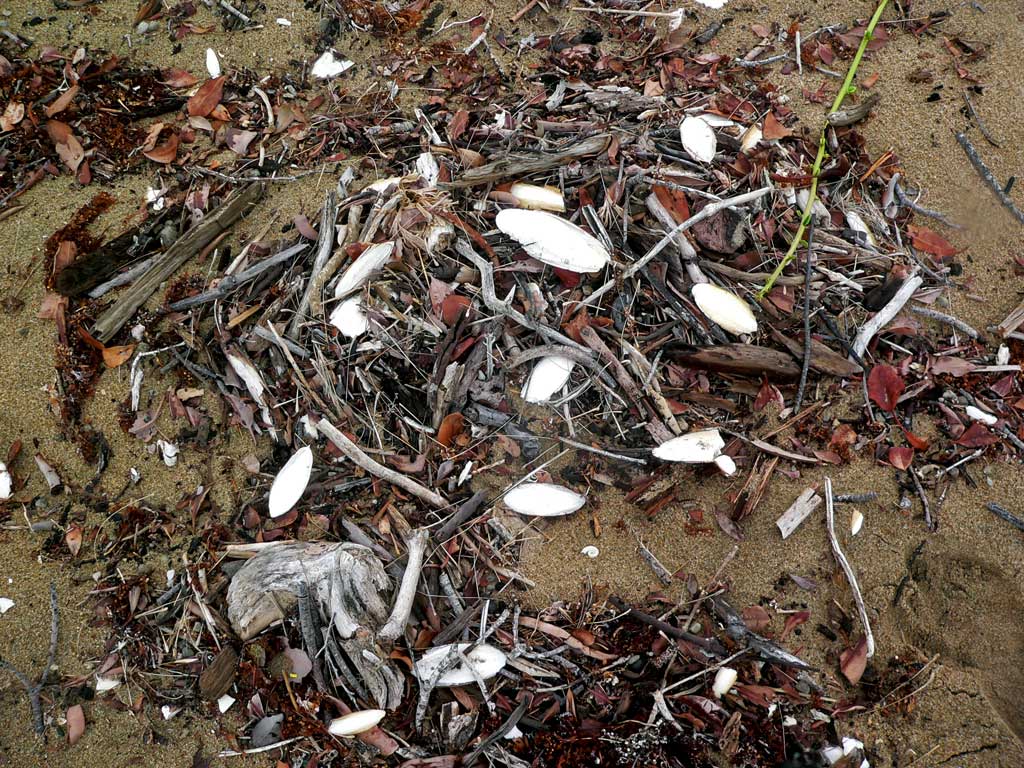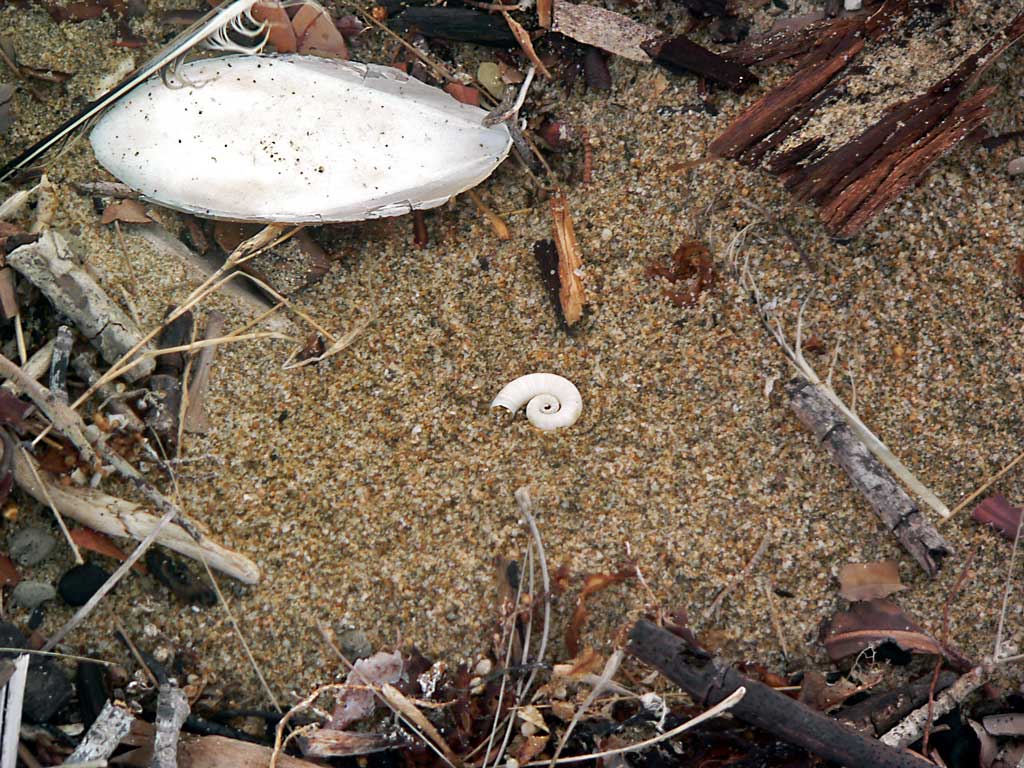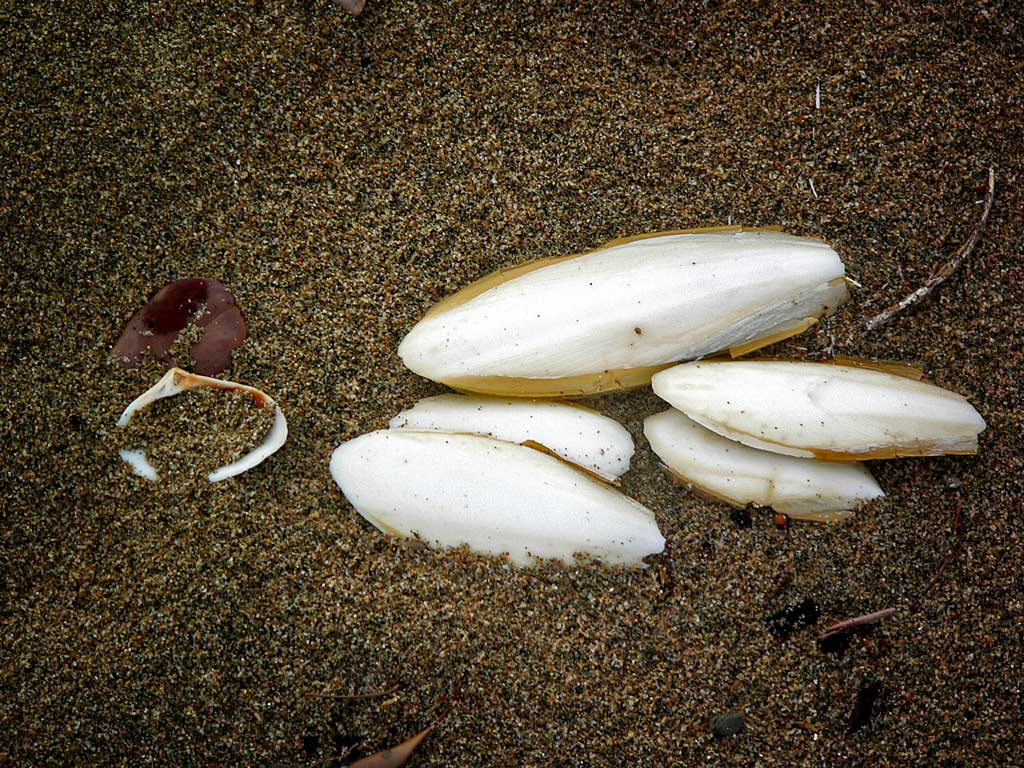Published in the Ocean Watch column, Honolulu Star-Advertiser © Susan Scott
January 19, 2007
When I was in Tonga last summer, I spotted a cuttlebone on the beach.
Since I’d never found one before, I thought this a jewel and brought it home. A few months l ater, during a walk on a long beach in Australia’s Whitsunday Islands, I found about 20 cuttlebones. I then considered myself wealthy in cuttle treasure.
Last week, I flew to Mackay, a small town on the Queensland coast where I’m having work done on my sailboat. When my work was finished and the sun got low, I headed for the nearby beach, flat, wide and more than a mile long.
There the high tide had deposited a long line of seaweed, driftwood — and Styrofoam.
Nice, I thought, a fantastic beach like this littered with a ton of trash. But the white stuff was no litter. It was thousands of washed up cuttlebones. Now, I am filthy rich in cuttlebones.
Cuttlefish look like short, squat squid, and the two are related. Both have 10 appendages around the mouth, swim backward by water jet, can change colors instantly and release a cloud of ink through the anus when threatened.
Unlike a squid, however, a cuttlefish has a flat rigid disk along its back. We call these white oval things cuttlebones and buy them in pet stores for our parakeets to gnaw on.
Technically, though, a cuttlebone is an internal shell, and it does more than provide structure for the creature’s soft body. It also provides buoyancy.
The underside of a cuttlebone contains a row of narrow lines down the center. (If your bird hasn’t demolished its cuttlebone, these are easy to see.)
In life the spaces between these partitions contain fluid and nitrogen gas. By changing the amounts of liquid to gas, the cuttlefish can float high or sink low.
Light controls this function. During the day a cuttlefish loses gas and sinks to the ocean floor. When night falls the animal gases up and goes hunting.
Another species of cuttlefish contains a spiraled, gas-filled shell that resembles an inch-wide chambered nautilus (another relative).
When the cuttlefish dies, the shell floats to the surface and often washes ashore.
My cuttlefish treasure chest now contains some of these, too.
I’ve had two memorable moments with live cuttlefish. During a dive in Thailand, I spotted two cuttlefish about a foot long, hovering off a large coral head and flashing a range of astonishing colors.
I wondered what these nocturnal animals were up to and why they stuck around with a bunch of bubble-blowing creatures staring at them. Now I know male cuttlefish perform light shows for prospective mates. The cuttlefish couple was courting.
My other good cuttlefish experience was at the Waikiki Aquarium during a rare exhibit of two Hawaii cuttlefish. I visited these odd, colorful creatures several times. One time I went, though, and they were gone. Like squid, cuttlefish have short lives, only one to three years.
Cuttlefish are native to Hawaii but are hard to find — except in crack seed stores. These shops sell spicy dried cuttlefish as snacks.
Here in Mackay, I’m now stepping over cuttlebones without taking much notice, but I appreciate their beauty and function. I am, after all, a cuttlefish tycoon.


